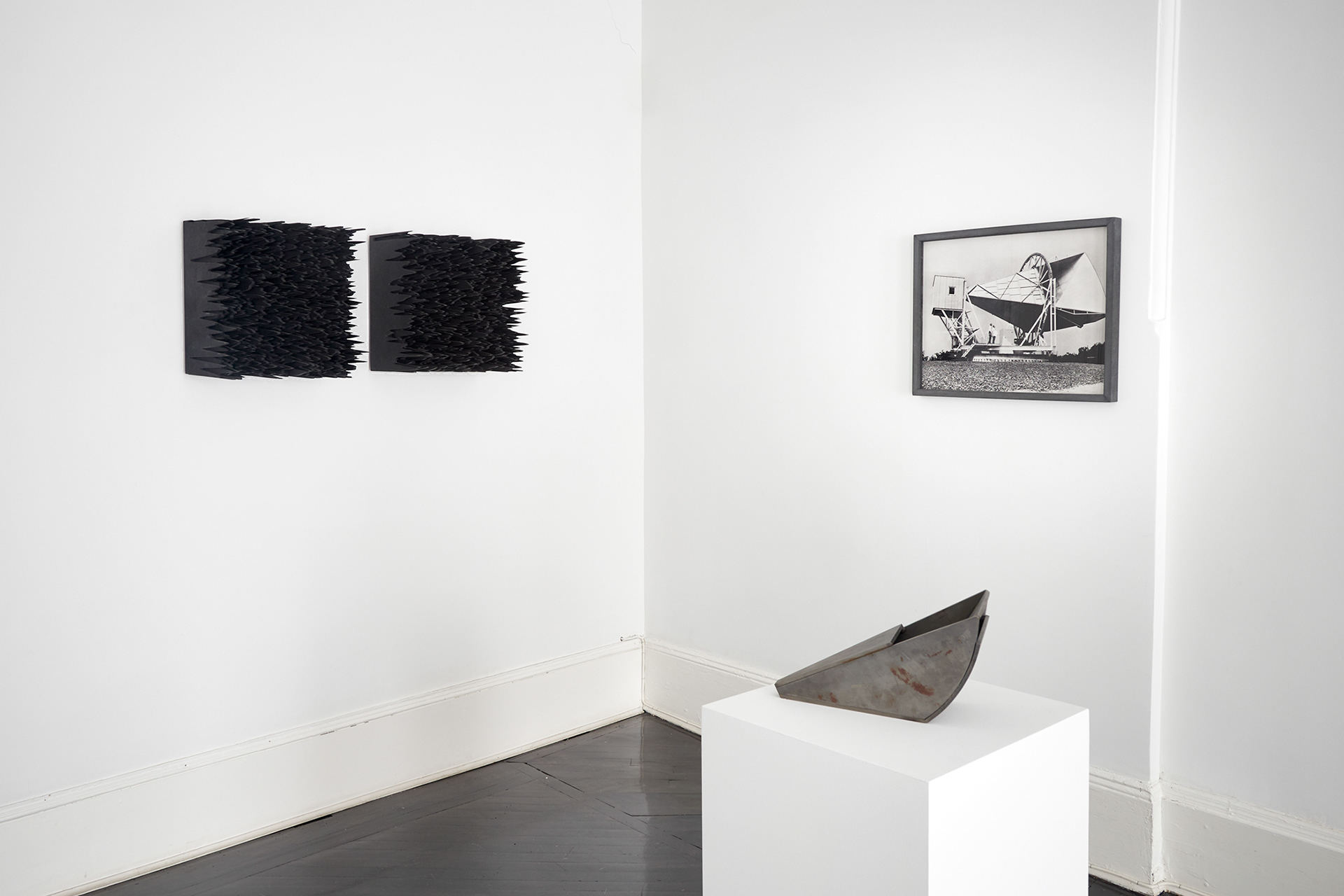
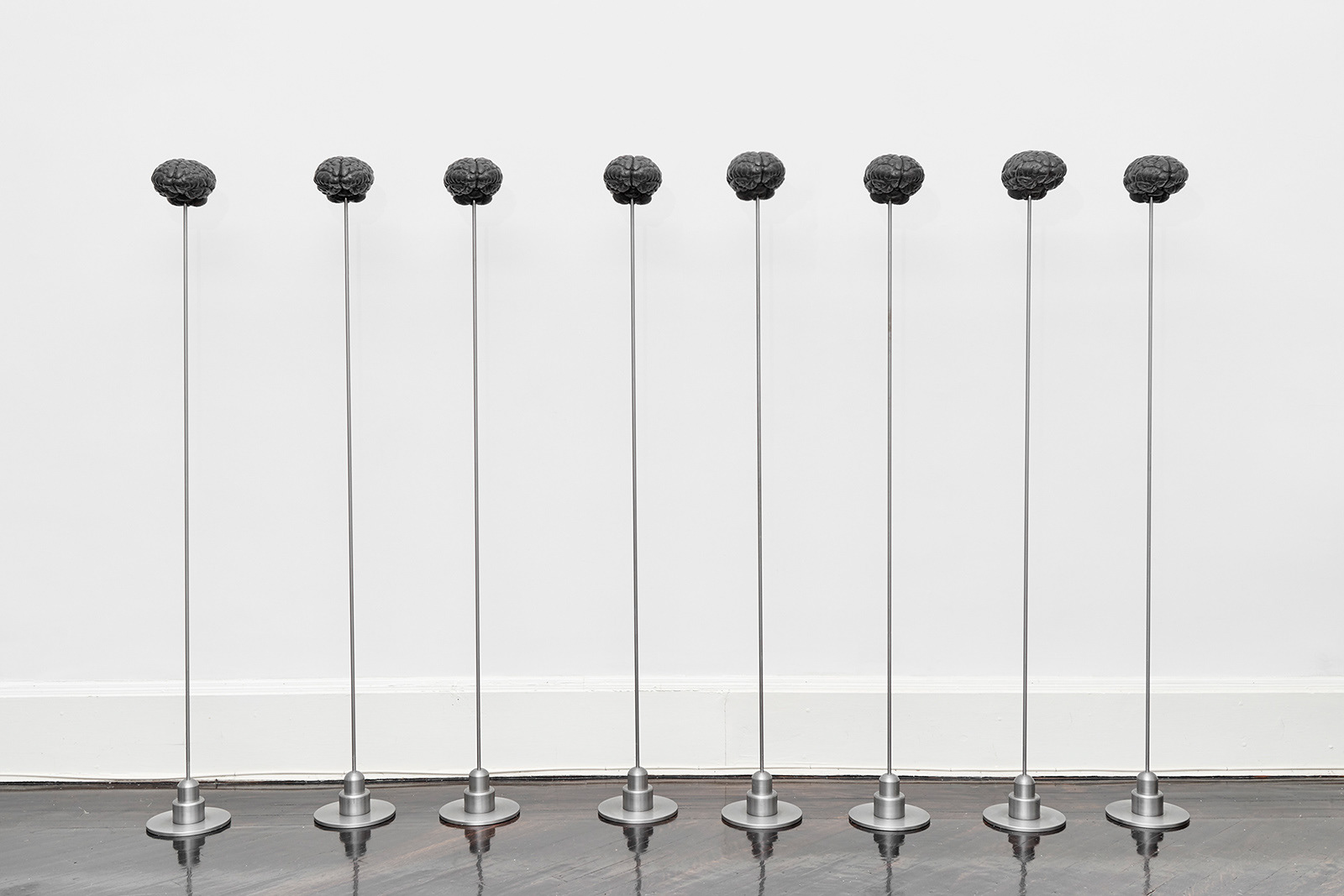
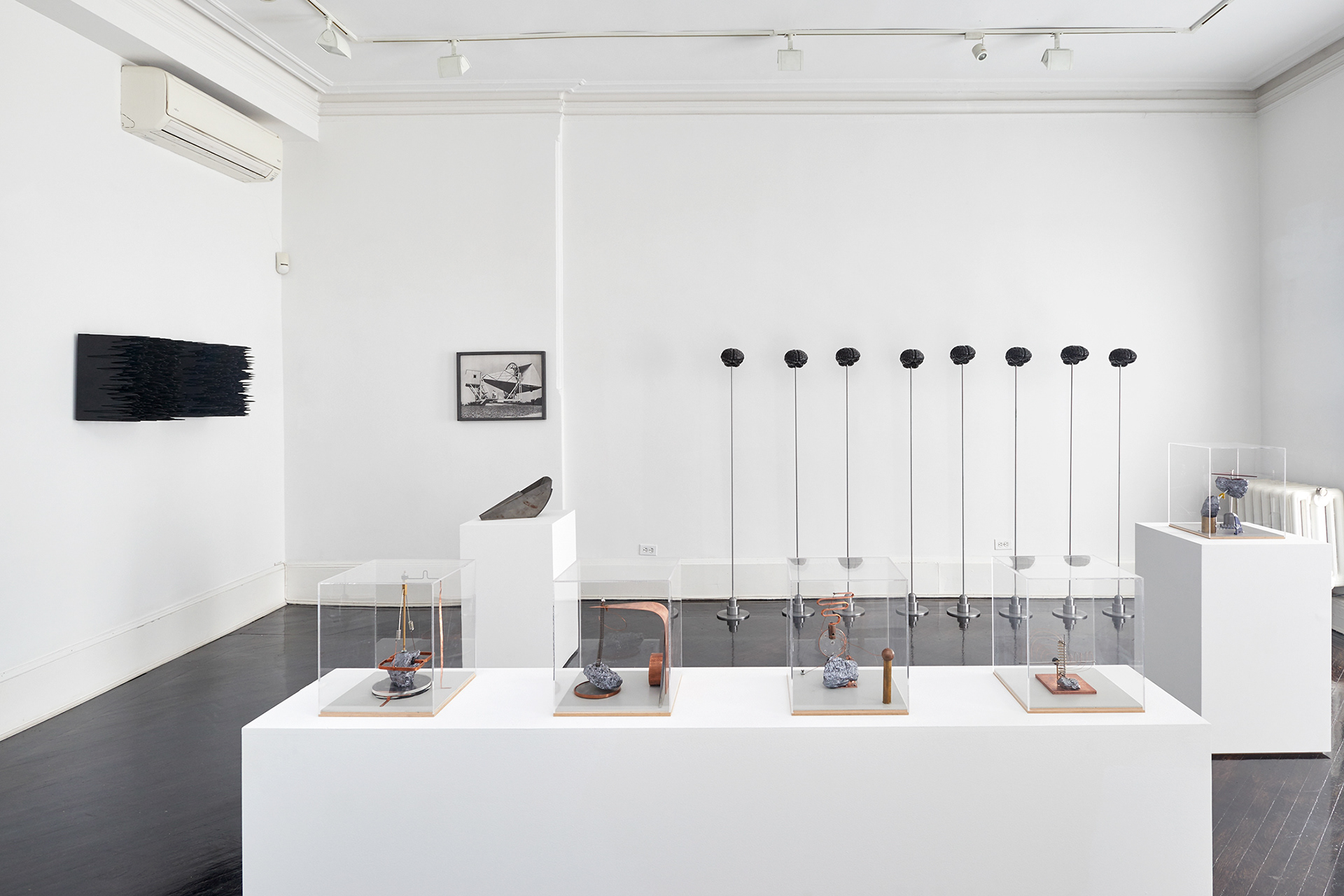
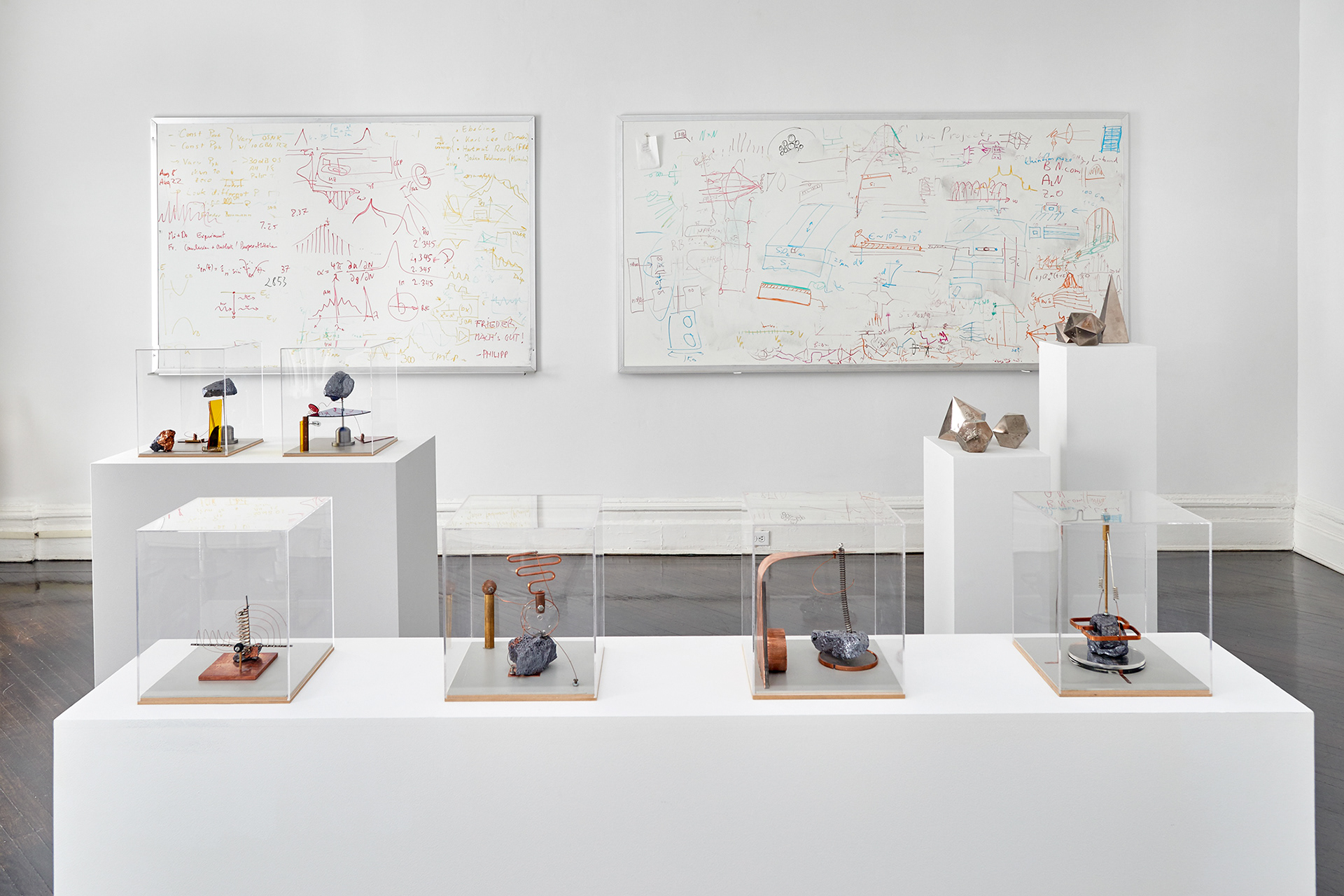
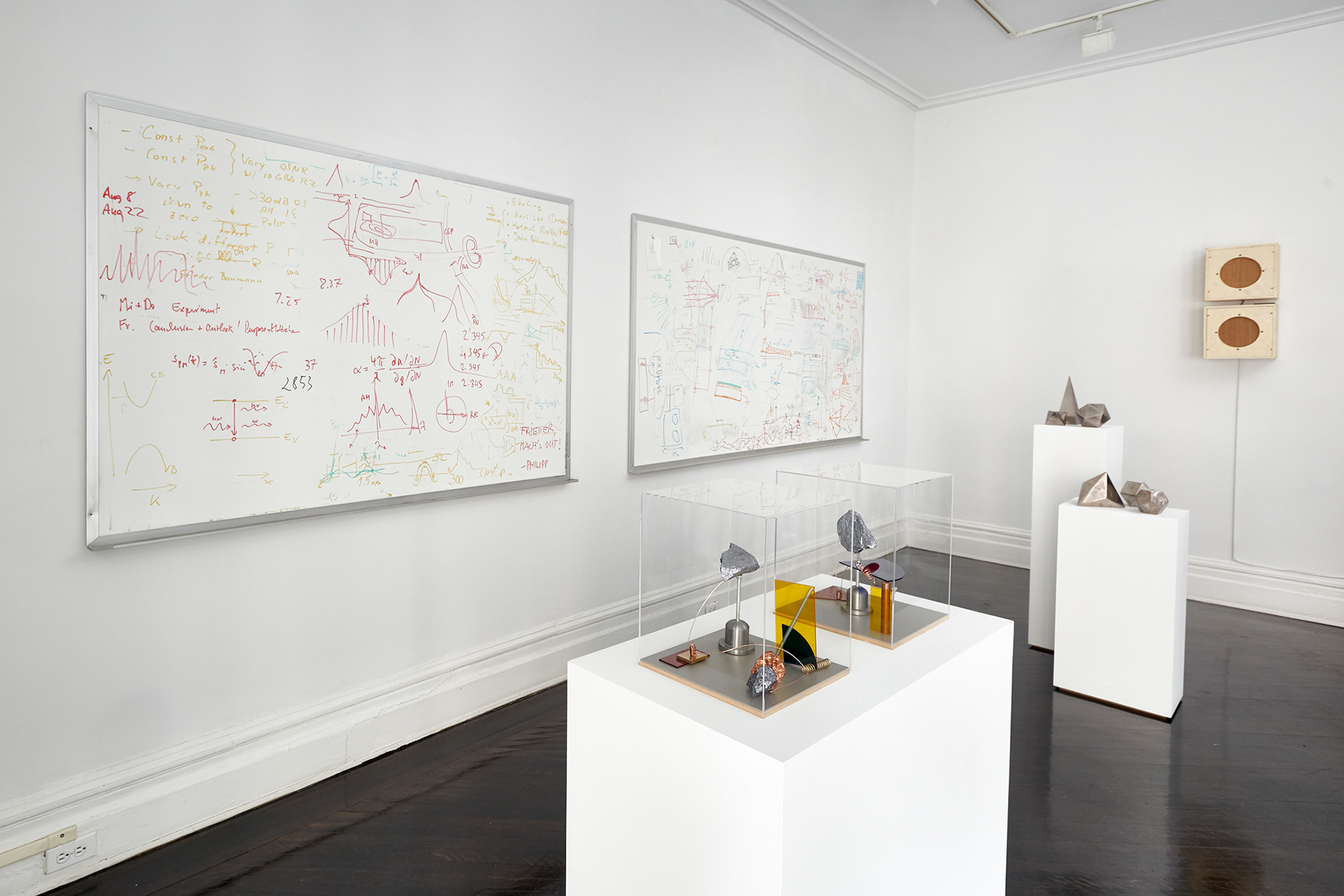
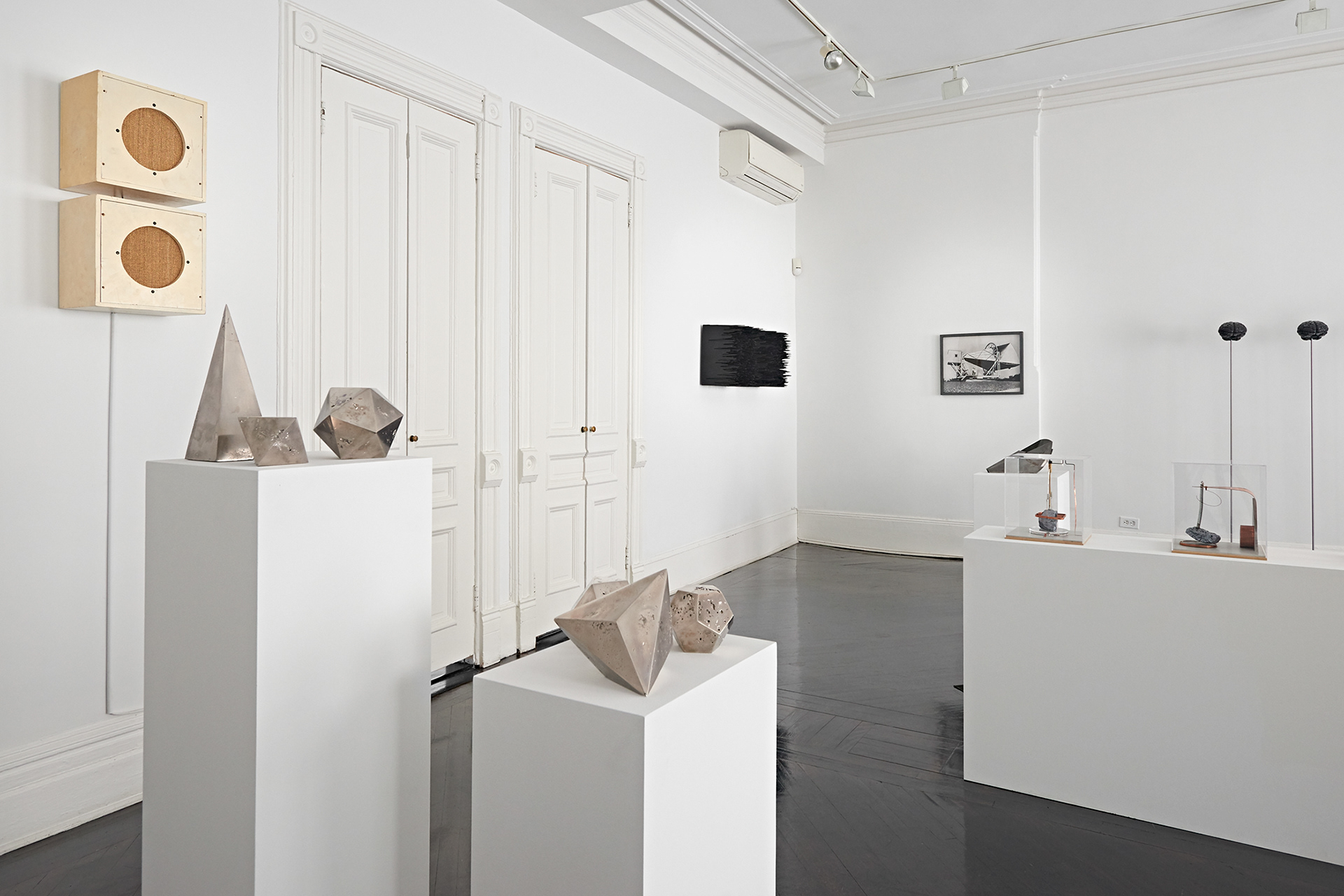
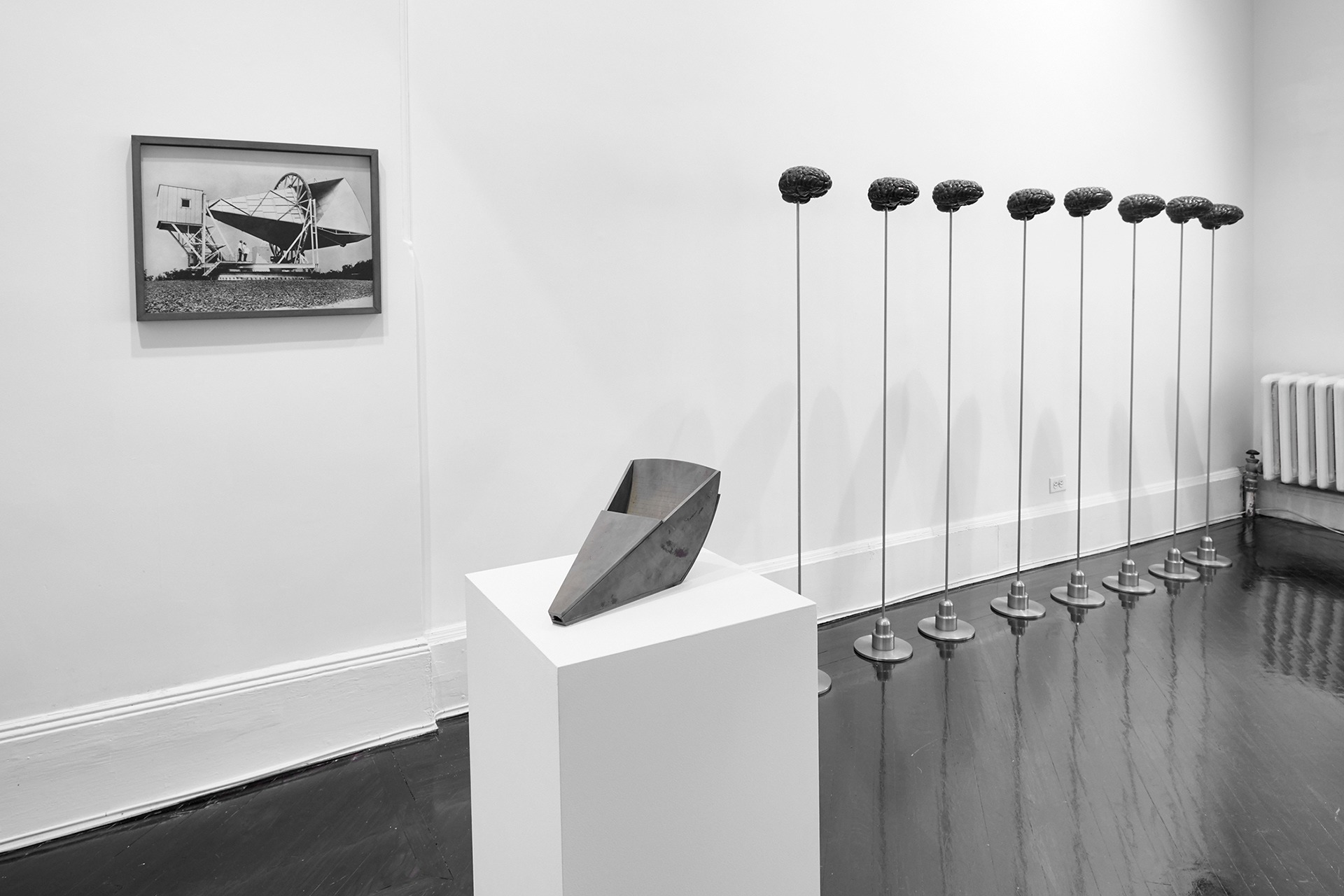
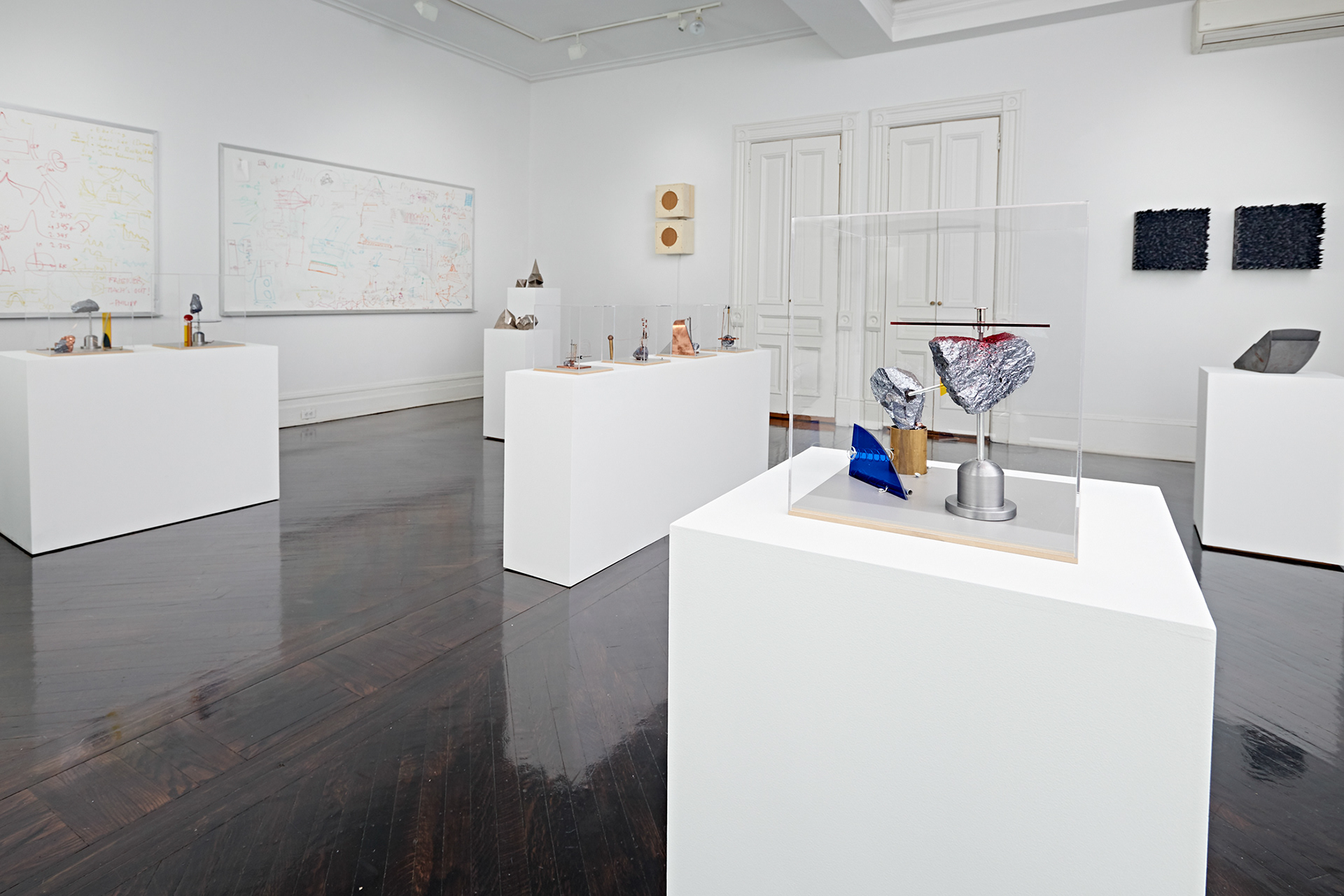
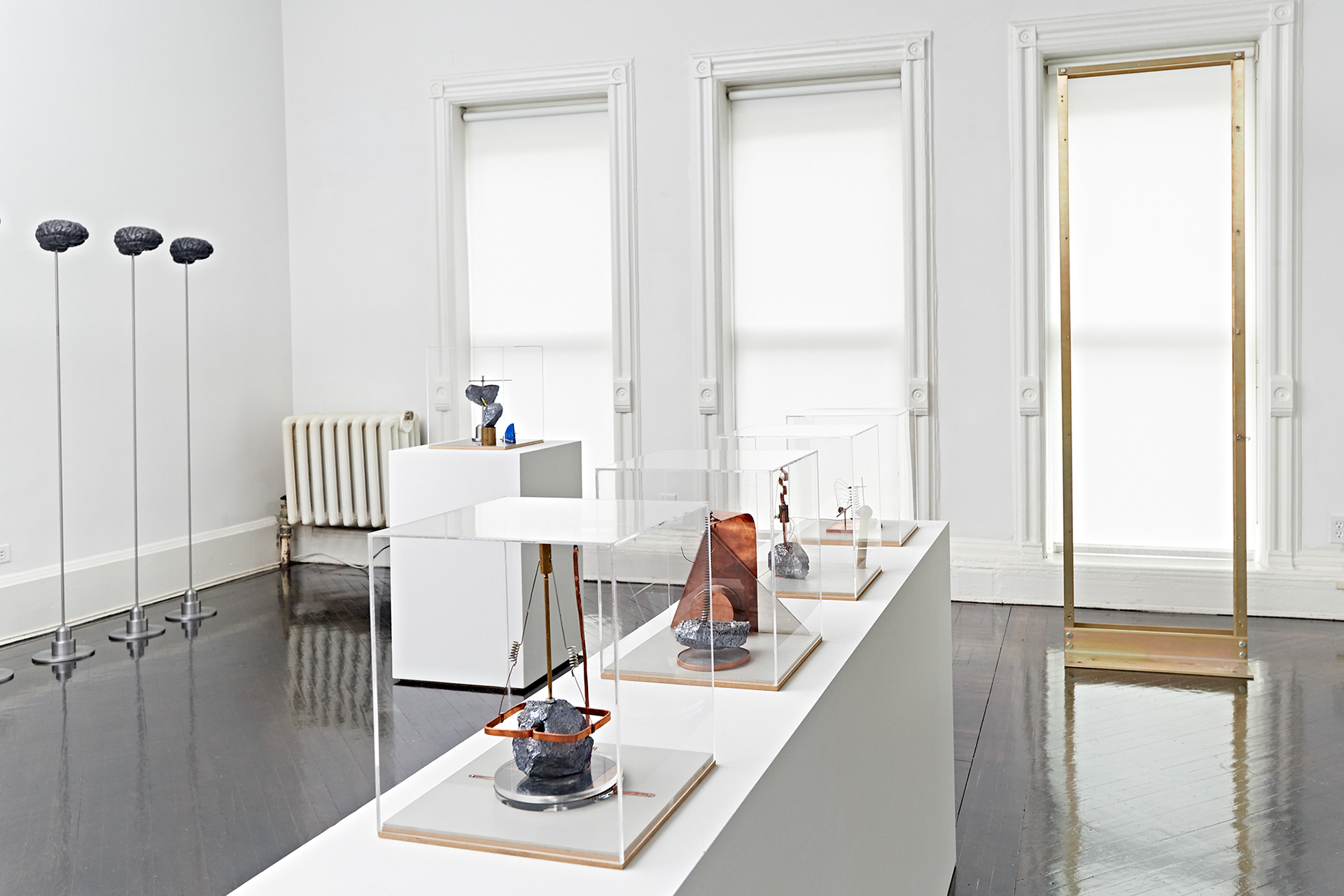
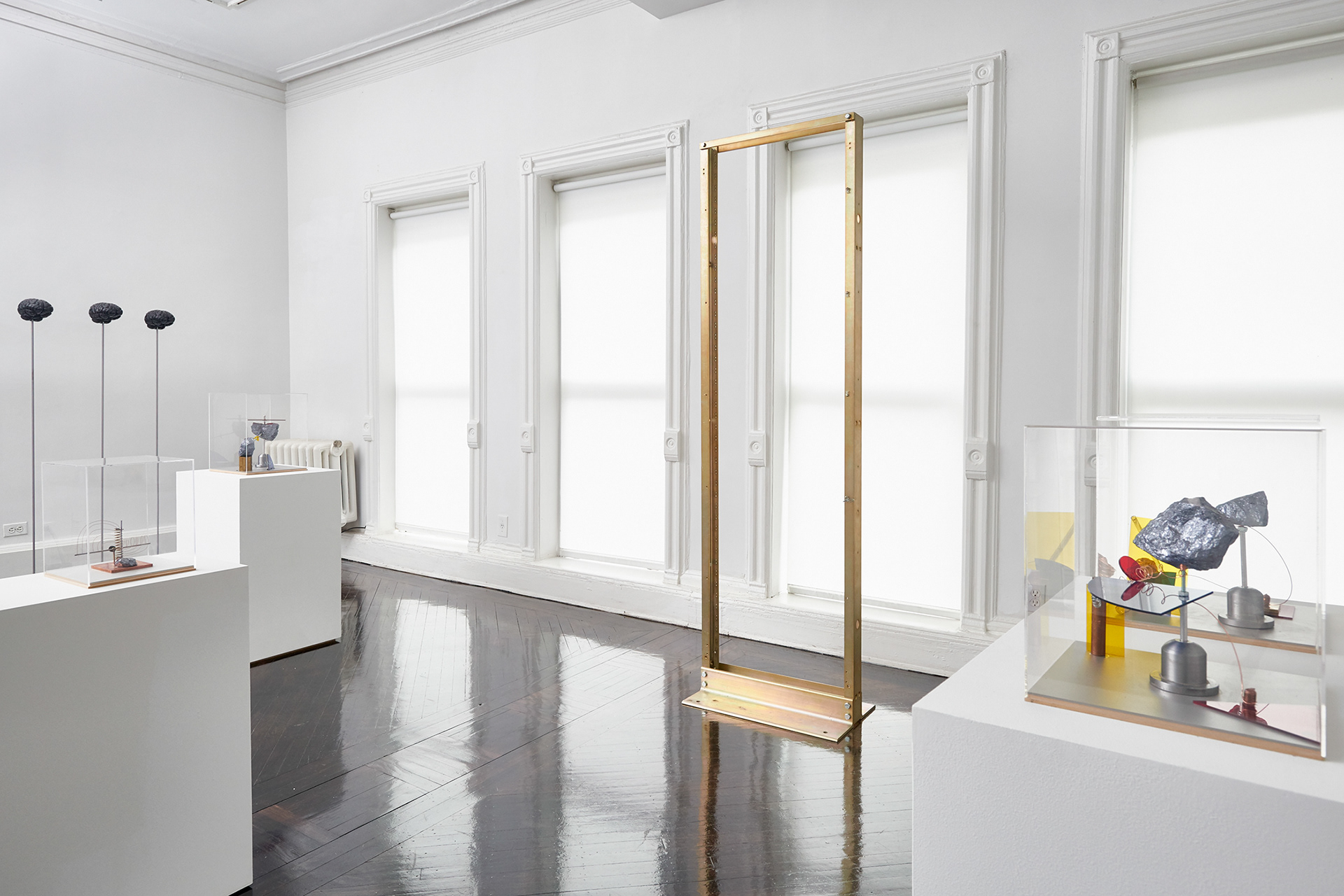
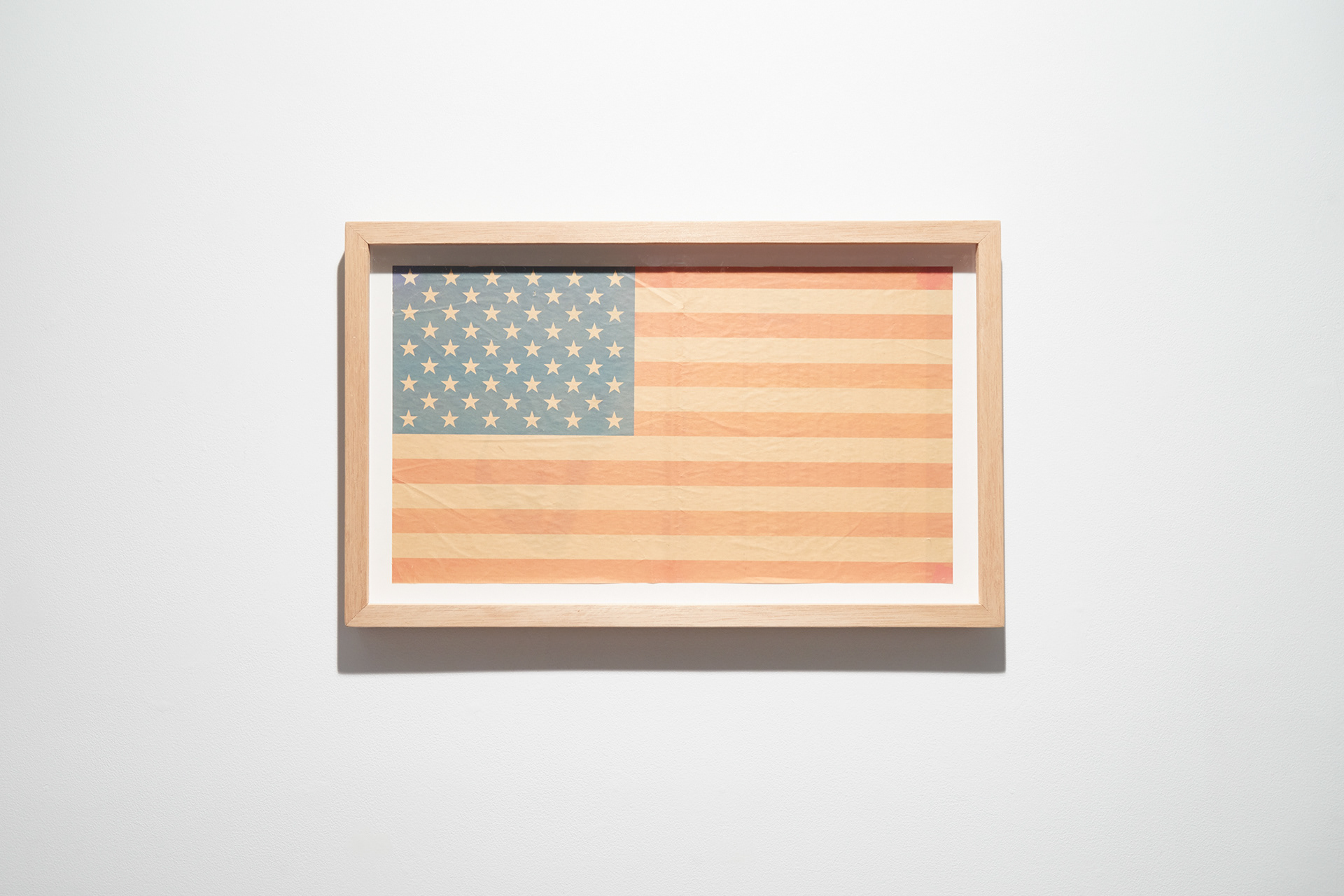
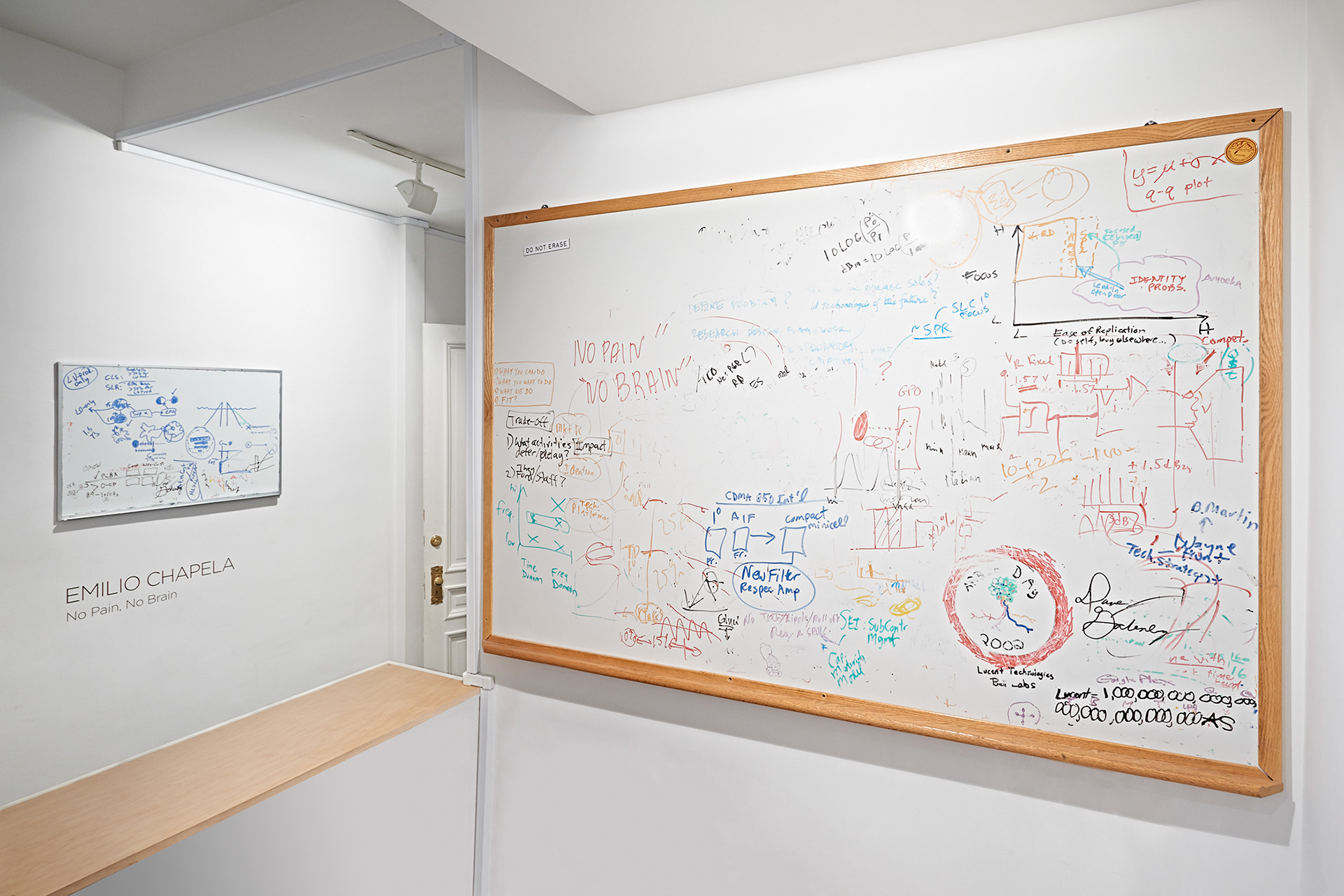
Building on the investigations of the material manifestations of human perspective and information systems that Chapela introduced in his 2014 exhibition at the gallery, No Pain, No Brain focuses specifically on the intellectual and physical environments of the Bell Labs complex during its 90-year history. As the premises were recently sold to Nokia and some buildings are on the verge of being converted into a “mixed-use lifestyle complex”, Chapela took on the role of archeologist and anthropologist as he explored the grounds and uncovered its vestiges: abandoned but yet stuck in time, as if the scientists would return at any moment to resume their experiments. The Do Not Erase series offers a tribute to the anonymous scientists whose musings remain un-erased on whiteboards inside the Laboratories’ buildings. Saved from the fate of demolition, these whiteboards preserve for posterity the ‘famous last words’ and calculations of some of these scientists, some of which include “No Pain, No Brain” and “Frieder Mach’s Gut!” As Ken Farmer writes in the exhibition text, “Appropriation and direct representation creates the space for abstract reflection and poetic speculation.” Re-contextualized in the gallery, these whiteboards offer glimpses into sets of knowledge and potentialities to which the public was not privy until now.
Other works also speak to Chapela’s interest in opening up the boundaries of knowledge in light of the on-going technological boom. Bell Nobel Prizes (2016) presents the brains of the eight Nobel Prize-winning scientists that worked at Bell Labs. The brains here are made of silicon, “an atomic relative of the carbon that comprises our own brains and the key ingredient in the computer chips that power society today”, and continue the speculation started by early science fiction writers of whether it too could be a life-generating and sustaining element. The sculptural series Semi-transistors (2016) also uses silicon as a base, this time for amplifying an electrical current, and pays homage to the first transistors that were created at Bell Labs in 1947. In the midst of the surge of artificial intelligence and machine learning, these works acknowledge the present issues brought forth by the machine’s challenge to the singular power of the human mind.
Throughout its history, Bell Labs worked to incorporate different modes of thought into the science-oriented complex by inviting artists to come work in and around the grounds. Chapela’s The Space Around, a multi-media video installation made specifically for the Hotel Americano, takes its inspiration from The Expanding Universe, the work that sound artist Laurie Spiegel made at Bell Labs in the mid-1970s, and the Horn Antenna, where the sounds of the cosmic microwave background were first detected.
Chapela visited Bell Labs over the course of a year, capturing the vacated grounds and the Ozymandias-esque relics of the Horn Antenna and the Eero Saarinen-designed main building and water tower on video. As Farmer describes, the video, which features the music of Laurie Spiegel and contemporary composer Esteban Chapela, elicits “nostalgia for a bygone frontier where technology’s daunting potential outweighed its inescapable presence.” By exploring the history of the site where so many life-changing inventions were created, Chapela’s work imagines how the arts and sciences will continue to forge new pathways forward and present new ways of seeing and thinking about the world we inhabit.
Emilio Chapela worked with the support of Henrique Faria Fine Art and Grupo Habita. And with the generous help of Bellworks, Somerset Development and Nokia Bell Labs.
Text by Ken Farmer